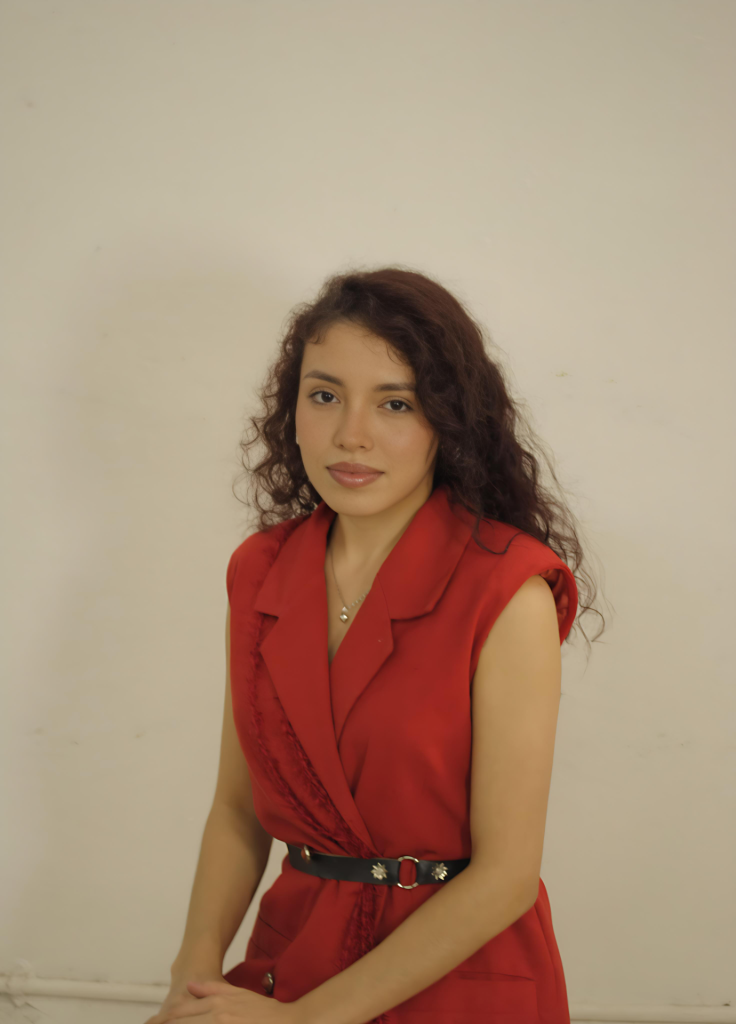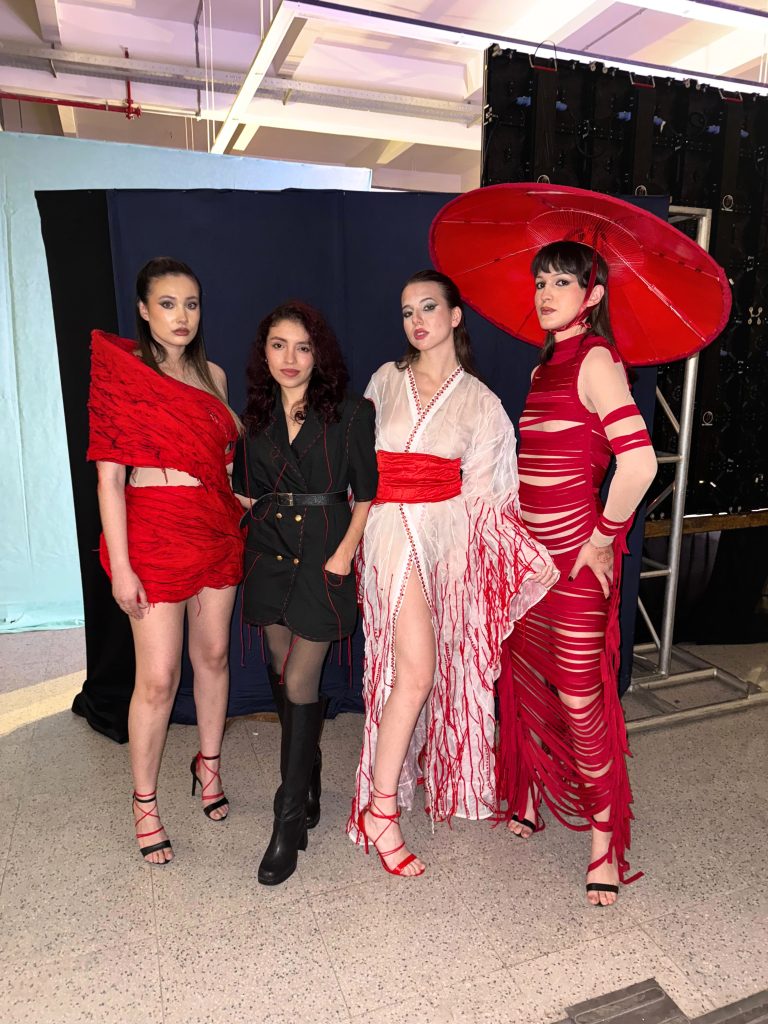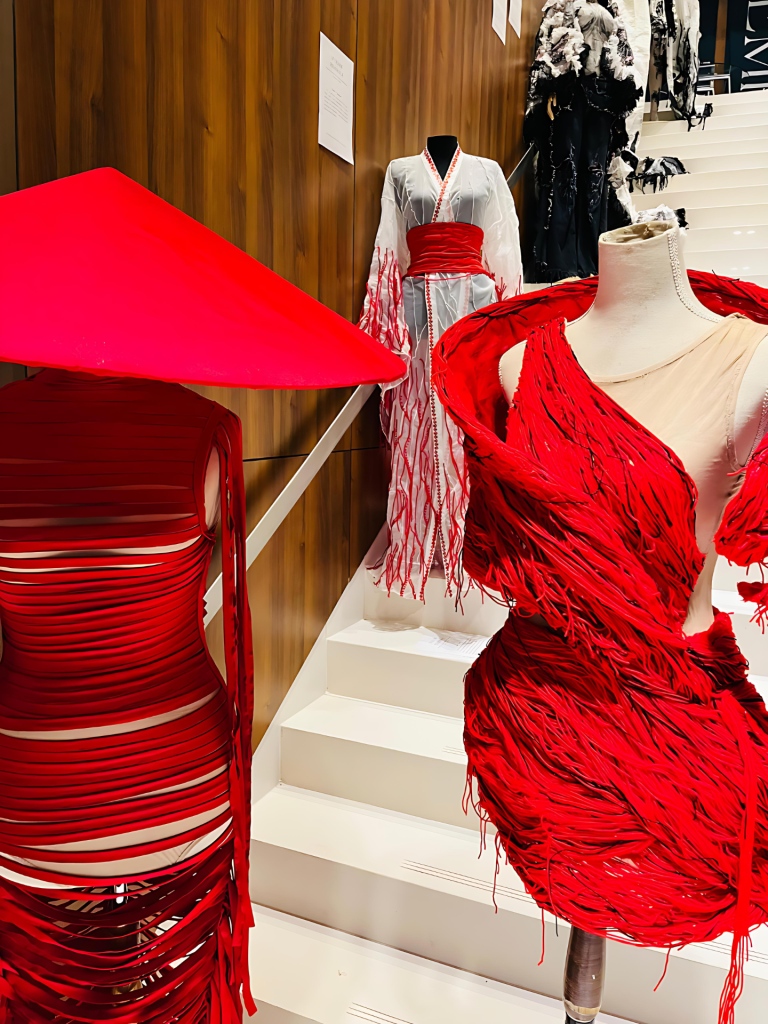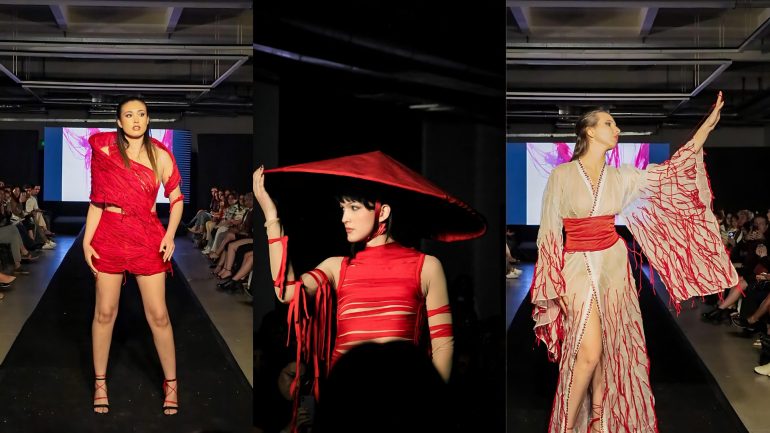At only 22 years old, Myriam Rivarola presented her collection Laberinto Escarlata (Scarlet Labyrinth) at FADA Fashion Day 2025. Her collection goes beyond clothing to become an emotional manifesto, woven with symbols, personal experiences and a deep desire to speak of what, until recently, was kept in silence.
In Paraguay, young people such as Myriam Rivarola, a Fashion Design student at the National University of Asunción, are transforming the way design is approached, created, and connected with the public. It is no longer solely about aesthetics or functionality. It is about feeling, about narrating the intimate, and about legitimising emotion as a necessary and powerful language.
“I wanted a collection that would not only work visually, but would carry a real emotional weight,” she explains. Laberinto Escarlata stems from a personal search to reflect herself without being too literal. The Japanese legend of the red thread of fate became a symbolic point of departure.

The emotional journey of Laberinto Escarlata
Since its origins, fashion has acted as a mirror of society, of its tensions, desires, and silences. Today, with a new generation of emerging creators, that mirror begins to reflect something that had long been avoided: emotion.
For years, Paraguay’s creative and professional spheres viewed expressing emotions as weakness. Previous generations grew up under emotional restraint, with sensitivity confined to intimacy or labeled “feminine.”
“I believe there is now greater openness to emotion in design because we live in a context that values authenticity and the meaning behind what we create”, Myriam reflects. “As young designers, we seek to connect from a real and intimate place, beyond producing something that is merely aesthetic or functional.”
Her search for meaning inspired a collection structured as an emotional journey in three acts. It moves from a fragile, hopeful beginning, through inner chaos, to final acceptance.
“I asked myself: what can be told through a thread? Laberinto Escarlata arises from that question. The labyrinth symbolises the twists, tangles, and confusion in our relationships; scarlet is the colour of the thread, but also of passion and emotional strength.”
A story woven from childhood
Myriam’s story does not begin on a runway, but in childhood, drawing, painting, sewing clothes for dolls. Watching her mother sew and her connection to dance and stage costumes planted the first seeds of design as a form of expression. Materialising emotions is not a simple process. It requires pausing, looking inward, and mastering technical tools in order to turn introspection into form.
Myriam used translucent fabrics to represent vulnerability, rigid structures to symbolise emotional tension, and fluid materials such as lycra to convey liberation. Colour also played a key role: from white to red, passing through black, each combination marked a different emotional stage.
“The greatest challenge was to translate emotions so abstract into tangible garments, without losing the subtlety of the concept”, she shares. “I wanted the symbol of the thread to evolve with each look, always maintaining its poetic strength.”
The creation process lasted around three intense months and was accompanied by her mother. This experience created a bond that reinforces the affective dimension of the collection. Presenting Laberinto Escarlata in a public space such as FADA Fashion Day was a deeply moving experience.
“Exposing something so personal generates fear and vulnerability, but also immense satisfaction. To feel that the message was understood reaffirmed my belief that creating from authenticity is worthwhile.”



Designing through emotion: A generational mark
In Paraguay, the cultural context is shifting. Speaking openly about mental health, emotions, or vulnerability was once taboo.Today, young people are leading a shift toward greater sensitivity. They do so through art, but also through daily conversations, social media, and university classrooms.
“Designing is also a way of understanding myself, of channelling what is internal and of generating connection from a sincere and sensitive place,” affirms Myriam. “To feel free to create from emotion is a form of resistance in a society that often demands neutrality or perfection”, she adds.
This change in approach is not only individual but also collective. The collaborations and connections that emerged following her presentation, at fairs such as FEMIT, Asunción Fashion Week 2025, and now at the Paraguay EXPO 2025, confirm that sensitivity can also be a driver of opportunity and community.
From her perspective, fashion design in Paraguay is at a moment of expansion, though it still requires greater support. Myriam dreams of an industry that values not only talent, but also sensitivity and authenticity.
“My generation is bringing a fresher, more conscious and more genuine perspective. We want to tell stories that move people, that connect with the public and do not remain purely visual.”
Embracing emotion to build a creative future
Her commitment to symbolism and emotion extends into the future. She aims to keep creating from a place of feeling, contributing to meaningful change and to collaborate with other talents.
“Be true to your voice and to your emotions. Do not be afraid to explore the symbolic. Fashion is a powerful language, and when we design from authenticity, we truly connect with others and with ourselves,” expresses Myriam, as a message to those beginning to create from the personal.
In times when superficial noise seems to dominate, Laberinto Escarlata reminds us that there is still space for the poetic, the introspective, and the vulnerable. And that every thread, no matter how tangled, can guide us towards a more sincere way of inhabiting creativity.


